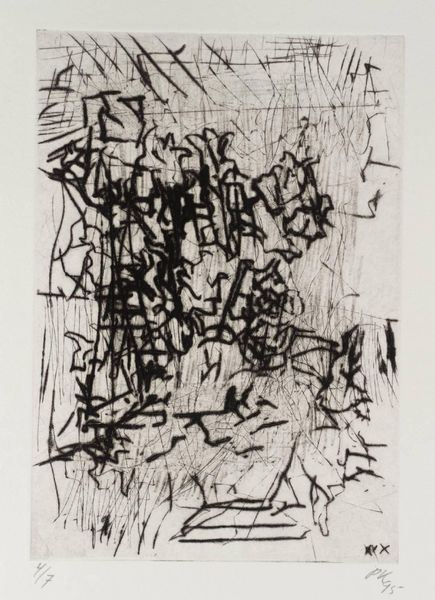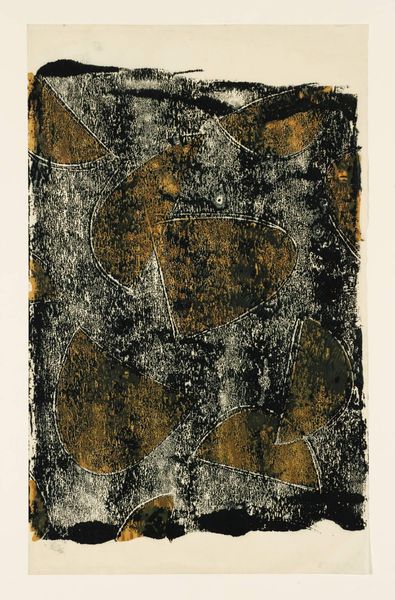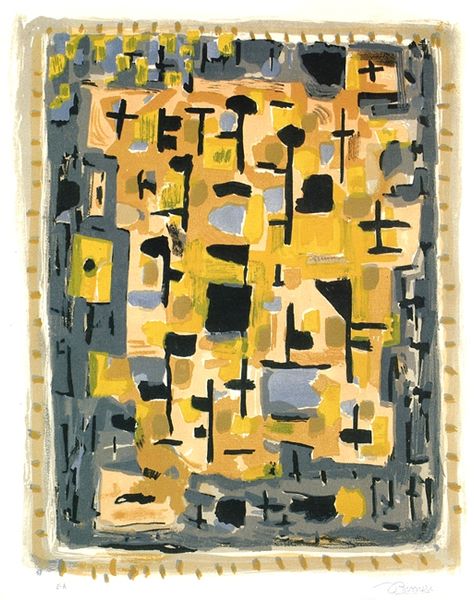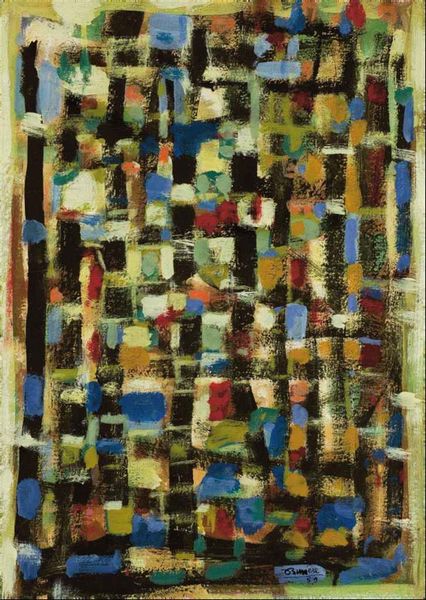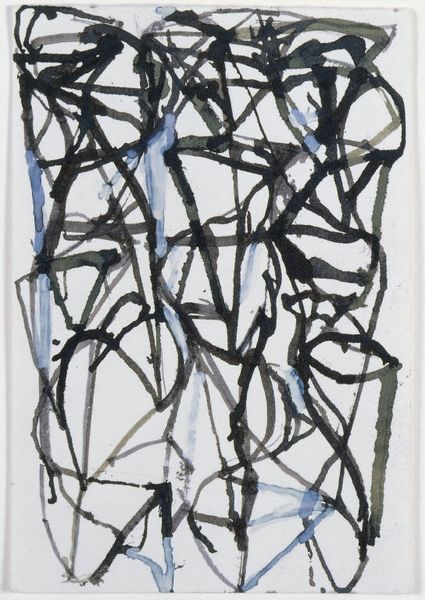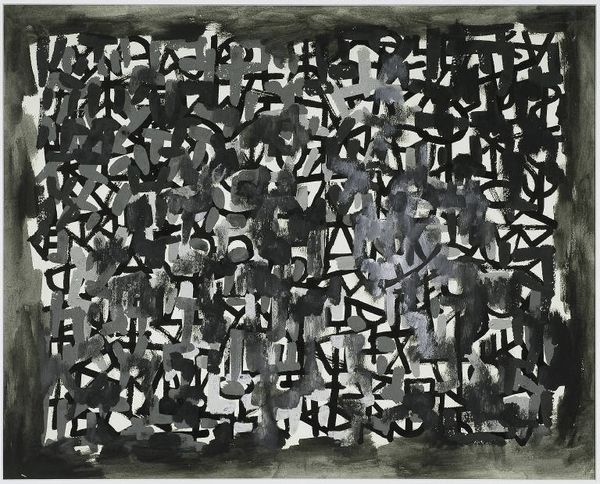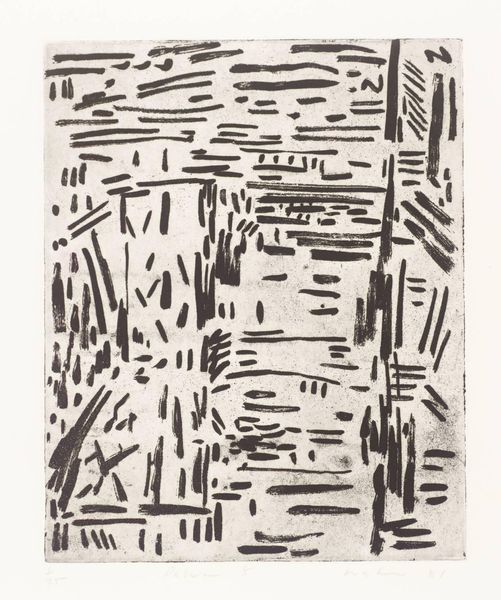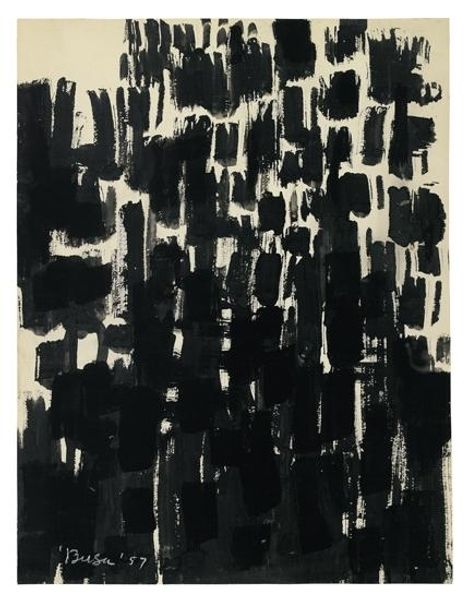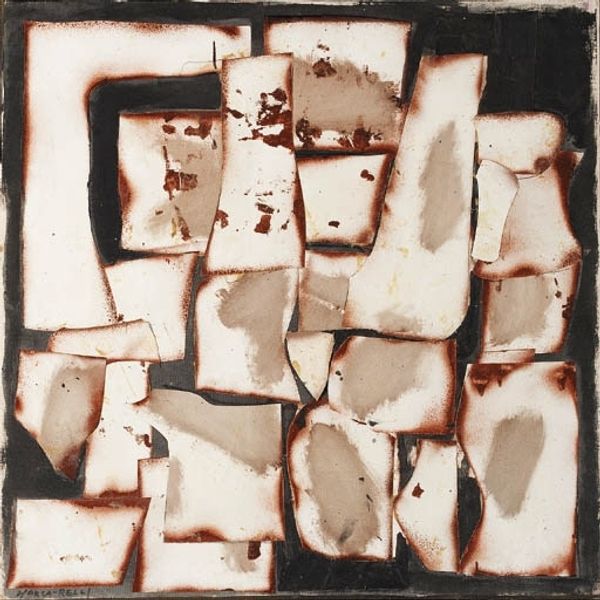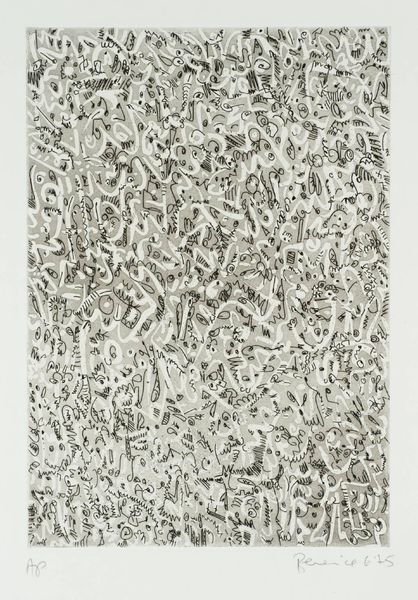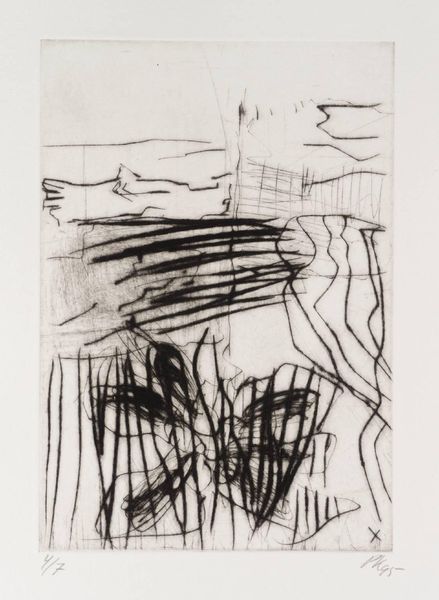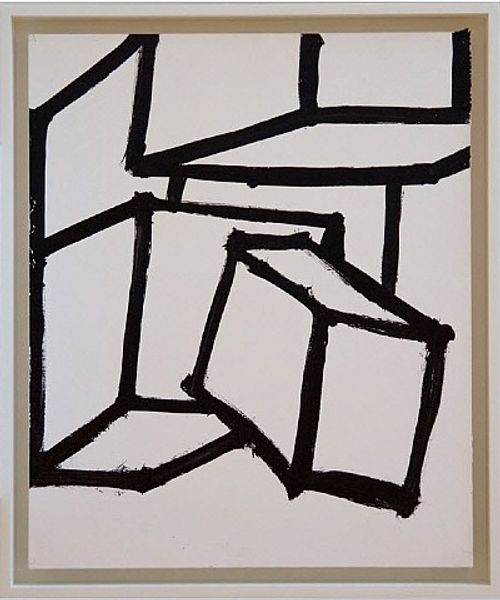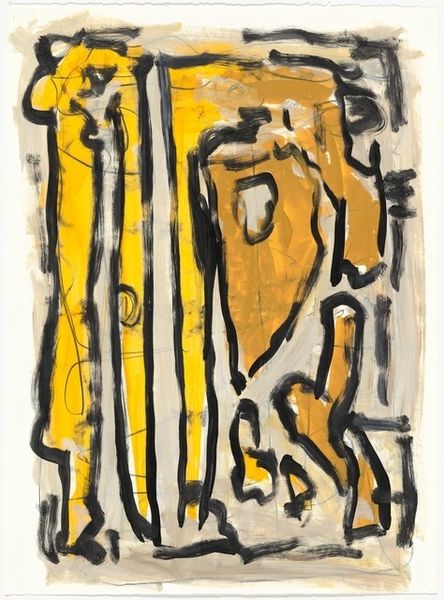
print, etching, paper
#
abstract-expressionism
#
abstract expressionism
# print
#
etching
#
paper
#
form
#
geometric
#
line
Copyright: Roger Bissière,Fair Use
Curator: We're looking now at an untitled etching on paper by Roger Bissière, created in 1955. It's currently part of the Tate Modern's collection. Editor: My first impression? It's like looking at an archaeological dig site. All these broken lines, suggesting something that used to be whole but is now fractured and layered. Curator: Precisely. The piece hinges on line, texture, and form. The dominant visual element is a dense network of mainly short, black lines creating geometric shapes on a mottled grey background. Editor: Yeah, they look almost haphazard at first, but the longer you look, you realize there is rhythm. Those irregular rectangles bumping into each other--it’s almost like code. Or city blocks seen from above in some long-forgotten world. Curator: A relevant perspective. Bissière, while associated with abstract expressionism, possessed a very unique and, at times, enigmatic visual vocabulary. Notice how the background tonality shifts from darker to lighter grays and whites, generating spatial depth. It isn't merely a backdrop. Editor: It feels intentional—like he’s trying to create a sense of mystery or incompleteness. You see just enough, but you still want more. Almost like trying to recall a fading memory. The off-yellow bordering the entire picture feels nostalgic too, but very faint. Curator: Consider how Bissière might be channeling subconscious processes through such spontaneous marks, resulting in an intricate yet ultimately harmonious design. What seems chaotic at first resolves into structural integrity. Editor: And that makes it sing, doesn’t it? It’s not about perfect representation; it's about capturing something intangible. I am quite taken by it; you can get lost in the patterns, interpreting new secrets with every viewing. Curator: I concur that there is a depth which allows repeated scrutiny. It transcends simple aesthetic appreciation and provides layered opportunities for interpretation. Editor: I'm happy that even within the abstract we found clarity.
Comments
No comments
Be the first to comment and join the conversation on the ultimate creative platform.
